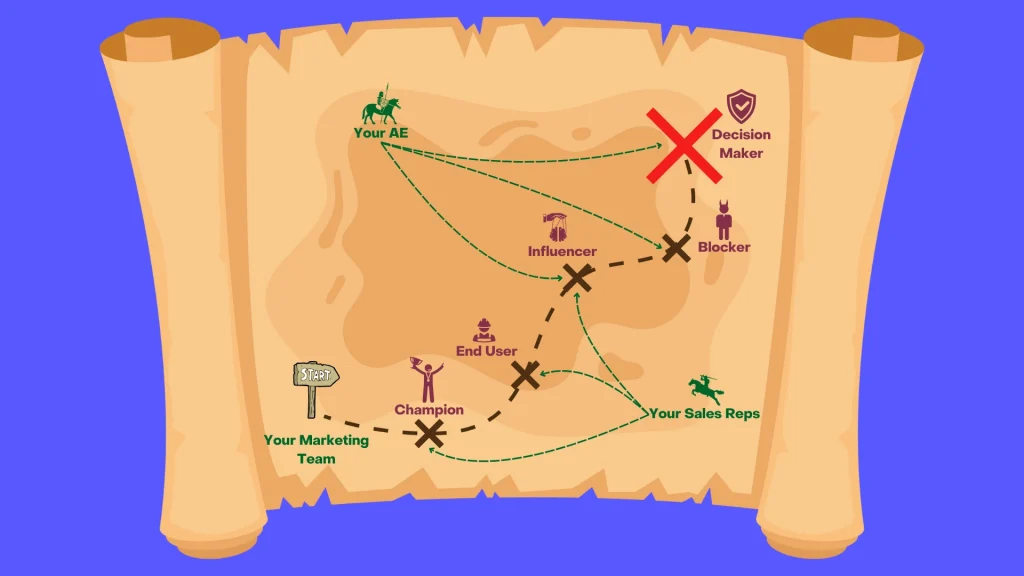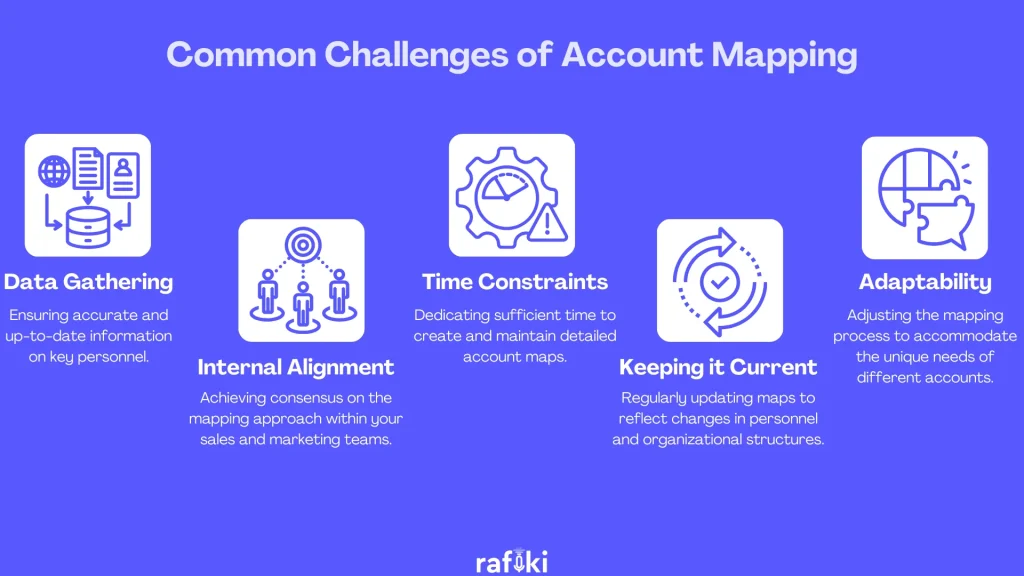Why Rafiki
Pricing


Pricing
Solutions

RevOps Leaders
Synchronize revenue generating functions

SDR Leaders
Get your team aligned and Coach your Reps 3x faster at scale

Sales Leaders
Unlock pipeline truth, drive confident forecasts

The world of B2B sales can feel like navigating a labyrinth. You juggle multiple stakeholders, decipher complex decision-making processes, and tailor your approach for each unique account. Account mapping emerges as a powerful tool to illuminate this path.
By revealing the key players and their relationships within an organization, account mapping empowers you to craft targeted sales and marketing strategies, ultimately boosting your win rates.
Let’s dive in!
So, what exactly is account mapping? In essence, it's the process of visually depicting the critical individuals and their interconnectedness within a target company. Think of it like a blueprint that goes beyond a traditional organizational chart. Account mapping dives deeper to capture the informal influences and relationships that can make or break a deal.
By uncovering these dynamics, you gain a strategic advantage. You can identify the key decision-makers (the folks who hold the purse strings), influencers who sway those decisions, and even potential champions who can become vocal advocates within the organization. Account mapping also helps you pinpoint potential roadblocks - individuals who might oppose your solution. With this intel at your fingertips, you can craft a personalized approach for each account, ensuring your message resonates with the right people at the right time.
Remember the scenes in mythological or fantasy flicks where the commander is looking at a giant map of the battlefield and brainstorming strategies? Account mapping helps the sales leaders strategize specifically for converting an account. Imagine having a map like that to know exactly where to deploy your troops and resources to find the best path to victory:

Who should you include on your account map? While the specifics will vary depending on the industry and company size, here are some key players you won't want to miss:
By pinpointing these key roles and understanding their relationships, you can craft a multi-pronged approach. You can present technical details to the influencers, highlight ROI to the decision-makers, and showcase user experience for the end-users. Rafiki's Smart CRM Sync can be a great tool to use here. It automatically populates your CRM fields with key information from calls, like whether someone has the authority to sign a deal, helping you build a more accurate picture of the account structure.
An effective account map should be a clear and concise visual representation of the target organization. Here are some key elements to consider including:
Now that we know what to include and the right positions to map, it’ll be easier to understand the key benefits of account mapping:

Now that you understand the importance of account mapping and the key players to identify, let's dive into the practical steps of creating your own map. Here's a breakdown of the process:
1. Gather Information: Compile data from various sources to build a comprehensive picture of the target account. This might include:
2. Identify Key Players and Roles: Once you have a good grasp of the organization, analyze the information to pinpoint the key decision-makers, influencers, champions, blockers, and end-users.
3. Choose a Mapping Tool: Select a tool to visualize your account map. Popular options include whiteboards, online collaboration platforms, or dedicated account mapping software.
4. Visualize the Account Structure and Relationships: Here's where your chosen tool comes into play. Use it to create a clear and easy-to-understand representation of the organization's structure. Depict departments and reporting lines, and then connect individuals with lines to indicate their relationships (e.g., champion -> influencer -> decision-maker).
5. Continuously Update the Account Map: Remember, account maps are living documents. Rafiki's Smart Call Summary can be a valuable asset here. By automatically summarizing calls with key details, it saves reps time spent on manual note-taking and ensures important updates regarding personnel changes or project developments are captured. Regularly update your maps with new information to maintain their accuracy and effectiveness.
The ownership of account mapping can vary depending on your company structure. Ideally, it should be a collaborative effort between sales and marketing teams, with contributions from those who have existing relationships within the target account.
The best time to create an account map is early on in the sales cycle, ideally during the qualification stage. This allows you to tailor your outreach strategy from the very beginning and avoid wasting time on irrelevant contacts. Account mapping can also be revisited and refined throughout the sales process as you gather more intel.
So far, we’ve discussed the right way to do account mapping. But you should keep in mind that even with the best execution, you will still face some challenges. It’s important to plan for these challenges early on.

Incorporating account mapping into your sales strategy can help you gain a strategic edge in today's competitive B2B landscape. With a clear understanding of the key players and their relationships, you can craft targeted messaging that resonates with the right people at the right time.
Ready to see how Rafiki can supercharge your account mapping and other sales efforts? Sign up for a free 14-day trial today and unlock the power of conversation intelligence to streamline your sales process and boost win rates.
Map Your Sales Success